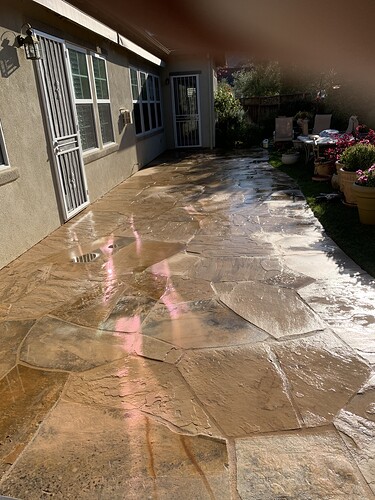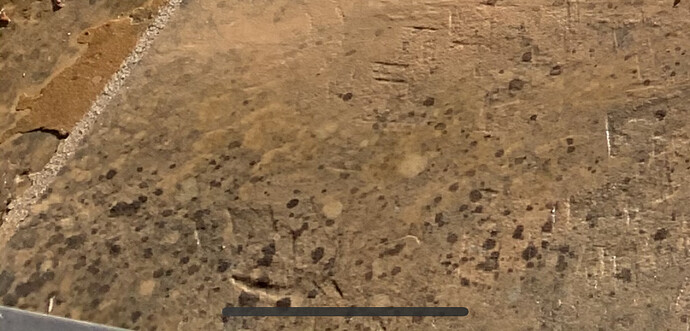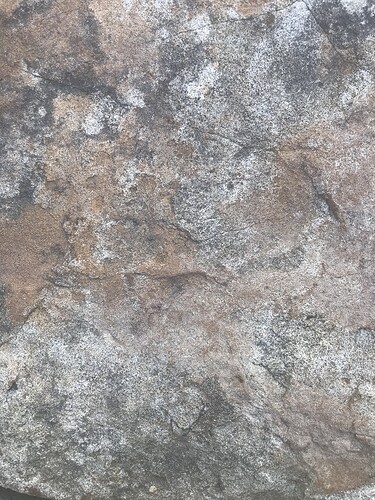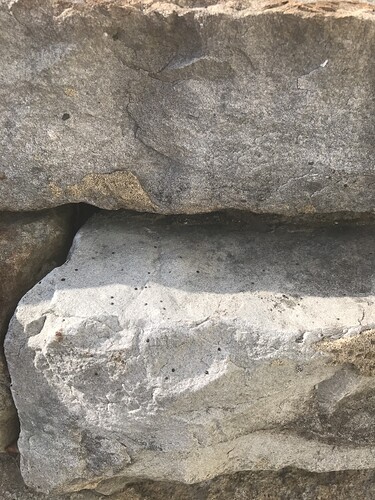Cleaned this flagstone today. 200 deg surface cleaner, turbo nozzle 3000 psi 200 degrees. Tried all 4 of f9 products at full strength and scrubbed with brush after dwelling. Nothing got the black out. What is it and how to remove? Do some stains just stay forever? The bottom left of the picture shows the black spots and you can see entire black areas throughout the rest.
Could be just part of the stones natural coloration I have ones that look like that on my bathroom wall.
Some actually have fossilized fern leaves imprinted.
@gbattle will have some good insight on this.
That’s what I was thinking except for the last 3% of the stone right where it meets the grass has black dots all over it. I think that part at least is stains. Maybe they redid the back yard and there used to be a tree or something that dropped stuff on it?
If it’s organic sh should take care of it. Although, you have to be careful with sh on some stone. It can give limestone a yellow tint but not enough to where people complain about. I would do a small test spot with sh. Start at about 4% and keep going up in strength. If you don’t notice it turning brown then it’s not organic.
I actually didn’t have any sh with me (which is rare) but after using the turbo nozzle and efflo, barc, groundskeeper and double eagle with no change I started to think that nothing would work. I wonder if sh could get stuff out that those can’t? In my experience I always (usually) start with sh and those are the chems that remove the stuff it can’t…
What is flagstone? Well, that depends on what stone they cut it from. What type of stone it is matters.
here is some info from a quick google search
What this means for you…
Sedimentary sandstone from Arizona has been used in flagstone patios since the early 1900s, so there’s been a long time to test its suitability. Light weight, pale color and resistance to heat absorption has made it a popular choice in the Southwest where pool decking can become impossibly hot in the summer. However, the porosity of this material makes it problematic too, and in many conditions homeowners are redoing their patios with harder flagstone alternatives such as metamorphic quartzite for these reasons:
- Moisture absorbed into sandstone can expand to cause flaking.
- Significant problems occur adjacent to irrigated areas due to overspray.
- Hard freezing may cause displacement of individual flags.
- Chlorinated swimming pool water can create significant damage.
- Wear and tear causes gradual erosion of the surface that leads to low spots.
- Areas where water collects can leave significant stains on the stone itself.
- Years of spills and grilling spatter can irreparably discolor sandstone.
When it comes to which chems to use remember that sh takes care of organics. If you spray sh on something and, nothing changes, it’s not organic so you have to start considering other options. Is it oil? Try a degreaser. Rust maybe? Use an acid.
F9 Groundskeeper, Barc, and Efflo are all acid based so they aren’t going to work on an organic stain.
What he said^^^^. The chems you’re testing are expensive too lol. Do the areas that have black look to be chips or crevices in the stone? If you break open a piece of flag stone it’ll likely be black on the inside, which is something you can’t change with any chem.
I’m not a power washing/cleaning expert, just learning, but I know one or two things about stone.
If you can’t get it out and need an explanation, sedimentary stone is porous. If you have ever tried sealing it, you will see that it acts like a sponge, just soaking it up (depending on solids in sealer). Even after being sealed, wear and tear will cause the seal to break and the sponge will once again soak things up. This is if it was sealed. If it wasn’t sealed, the water will collect at the low spots, and what doesn’t soak into the stone will then evaporate, leaving the minerals that were in the water in the pores of the stone, causing discoloration.
here is a piece of sandstone (sedimentary rock) that I laid for a retaining wall, this was a cap piece, notice how all the low spots are darker. And the other photo is from some stone I used in another retaining wall, notice the black streak. This stone was originally laid in 1912, when the farmhouse was moved I excavated the old stone foundation and used it for retaining walls. The stone hadn’t seen sunlight for about 100 years.
Thanks everyone! Definite shed some light on it. Looks like if sh doesn’t fix it then it’s unrepairable. It is right next to the sprinklers so probably the water caused deep inset discoloration.
I’ve ran into this several times. Never found a solution. Tell the customer that it stayed dirty for too long. It’s too far below the surface is my theory. I’ve noticed that those black spots are usually where the water pools. If they want stuff to look new forever it needs to be cleaned regularly.
Edit: I usually identify it prior to beginning the work. Notify customers of what to expect so that it’s no surprise. I do the same thing with some brick. A type of red brick I see has the same type of set it stains.
I agree with marine grunt. It looks like either oak resin or mold spores. Pump spray 4%-5% SH with some surfactant.





